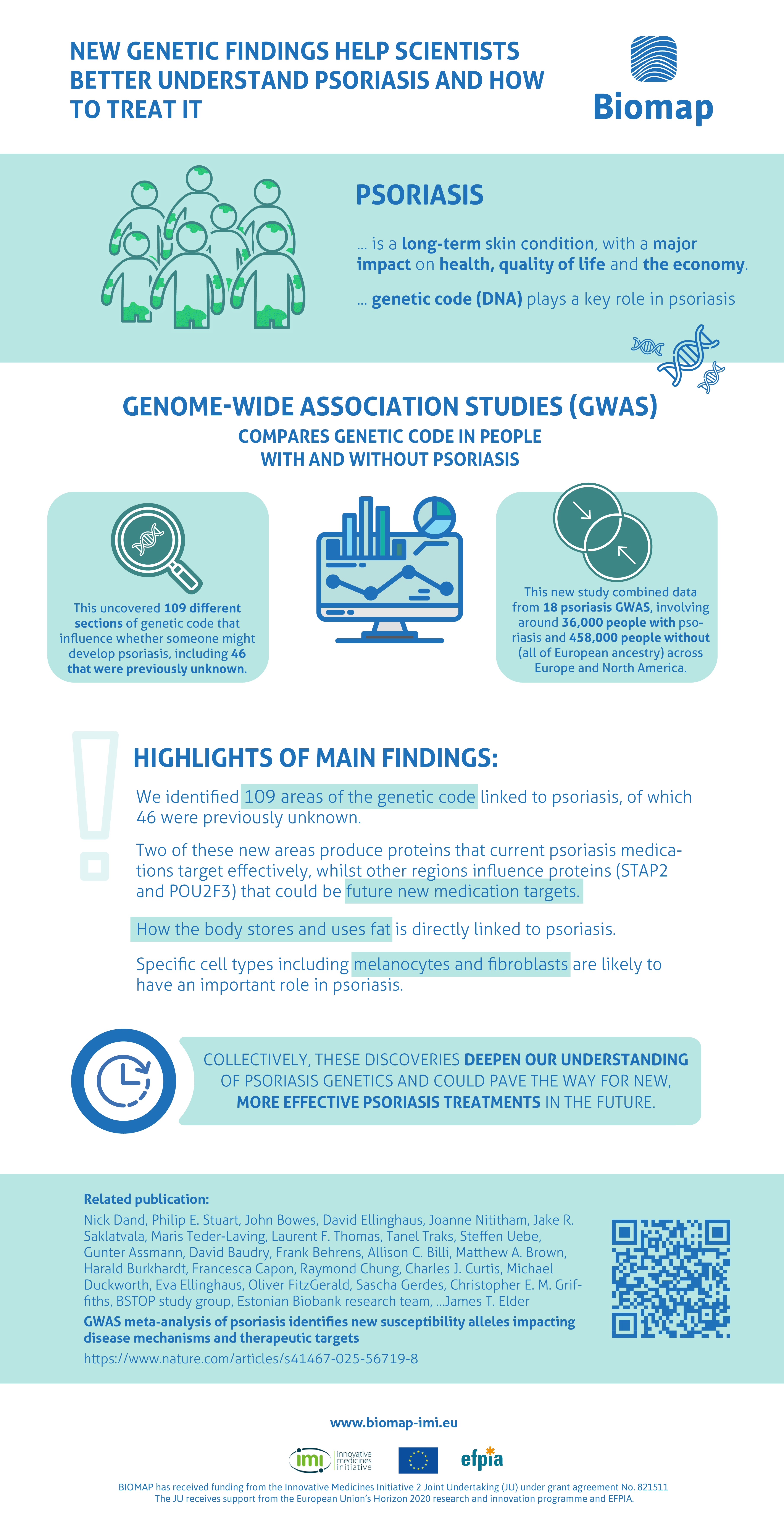New genetic findings help scientists better understand psoriasis and how to treat it
by Manpreet Sagoo
Psoriasis is a long-term skin condition affecting 60 million people worldwide, with a major impact on health, quality of life and the economy. Our genetic code (DNA) plays a key role in psoriasis and researchers want to understand all the genetic differences between people that affect psoriasis risk. To study this, scientists use genome-wide association studies (GWAS) to compare the genetic code in people with and without psoriasis.
This new study combined data from 18 psoriasis GWAS, involving around 36,000 people with psoriasis and 458,000 people without (all of European ancestry) across the UK, Europe and North America. This uncovered 109 different sections of genetic code that influence whether someone might develop psoriasis, including 46 that were previously unknown. This is a major discovery that now explains 60% of genetic factors driving psoriasis.
Two of the 46 new psoriasis-linked genetic differences are thought to affect proteins targeted by current psoriasis medications, which may explain their effectiveness. Other new discoveries highlight proteins that could serve as future psoriasis drug targets, including those produced by the POU2F3 gene (essential for skin cell development) and the STAP2 gene (which may protect against psoriasis).
We found a genetic link between increased levels of fat in the body and blood and increased risk of psoriasis, which highlights the important role of metabolism in psoriasis. This research has also pinpointed specific types of skin cell that are implicated by genetic evidence as key players in psoriasis, including melanocytes (which determine skin colour) and fibroblasts (which are building blocks of the skin). Collectively, these discoveries deepen our understanding of psoriasis genetics and could pave the way for new, more effective psoriasis treatments in the future.
Highlights of main findings:
- We identified 109 areas of the genetic code linked to psoriasis, of which 46 were previously unknown.
- Two of these new areas produce proteins that current psoriasis medications target effectively, whilst other regions influence proteins (STAP2 and POU2F3) that could be future new medication targets.
- How the body stores and uses fat is directly linked to psoriasis.
- Specific cell types including melanocytes and fibroblasts are likely to have an important role in psoriasis.
Related publication:
GWAS meta-analysis of psoriasis identifies new susceptibility alleles impacting disease mechanisms and therapeutic targets
Dand, N., Stuart, P.E., Bowes, J. et al.
Nature Communications volume 16, Article number: 2051 (2025) doi: 10.1038/s41467-025-56719-8

